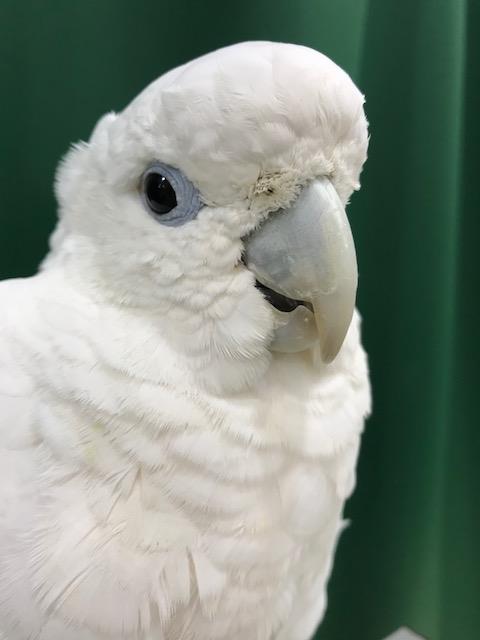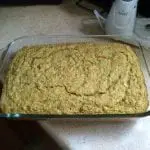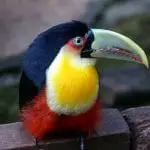Cockatoos are one of the birds that are expressive, playful, but also moody. They cannot tell you what they want, but since they are creative and expressive, they make use of their bodily functions to let you understand them. If you are able to understand your cockatoo’s behavior, there are more chances that you’ll be able to attend to their needs. This article is a guide to understanding your pet bird better.
A. Eyes
The cockatoo’s eyes play an important spot in determining what kind of body language they are telling you. It is not only used for their survival, but you would also know how your parrot feels at the moment through their eyes.
- Eye pinning
Eye pinning for cockatoo is a way for them to express what they feel by means of their naked eyes. It is described as a decrease in the size of their pupils. When your cockatoo eye pins, you may also need to observe what their bodily movement tells because it could mean a wide variety of emotions such as excitement, happiness, anger, and curiosity. Those new bird sitters who do not know anything about eye pinning would think that there is something wrong with their pet. Since eye pinning could mean both a negative and a positive attribute, you really need to be familiar with what their body language means as well.
- Eyes that are partially closed
Your cockatoo would usually show a partially closed eye as you rub it. It means that they are satisfied with what you are doing, and they want you to continue it further. If you are not doing anything and you see your eyes have partially closed eyes, it would mean that they are sleepy.
- Closed eyes
This is an obvious sign that your bird is sleeping. Don’t disturb your bird as it sleeps so as not to interrupt its bodily processes as well.
B. Vocalizations

The cockatoos are known for their superb vocalizations. It plays an important role in their playtime as well in their courtship season. In the wild, vocalization is a useful tool for cockatoos to warn their flock if there is danger, and it is also their way to attract their target mate. In captivity, vocalizations signal that they are playful, and at times, this is their way to seek attention.
- Whistling, talking and singing
When your cockatoo show does these vocalizations, it implies that they have a good mood and that they are happy and contented. If your cockatoo is used to seeing a crowd, they would usually whistle, talk, or sing in front of the audience observing them.
- Chattering
Chattering is when your bird is learning how to talk and sing. It could either be a soft and very loud chatter. Soft chatter means that your cockatoo is contented, and most likely, they are just practicing their communication skills while very loud chatter means that they are just getting your attention. Chattering in the wild is a way for them to get in touch with their flockmates.
- Growling
Growling is not usually heard from cockatoos, but when you hear this from them, it could mean that they are totally aggressive. This behavior shouldn’t be ignored because it means that something is bothering them, it could either be from their environment, or it could be an irritant from their body. When you hear your cockatoo growl, avoid handling it because they may bite.
C.Wings

The bird’s wings are not only used for their flights, but it is also an effective tool to communicate with their flocks and to humans through the way how they use it.
- Wing flapping
Your cockatoo can do wing flapping in place or while they are flying. If they flap their wings in place, it could mean that they are just exercising, cooling themselves, displaying their wings to their possible mate, or there is a possibility that they want to get your attention.
- Wing flipping
Wing flipping is a language to different kinds of things. It could mean that your cockatoo is not feeling well; that is why it is its way of informing you of the pain that it is experiencing. When they see their predator or if they are aggressive, wing flipping also indicates that they are angry or being territorial. When wing flipping is accompanied by head and shoulder bobbing, it means that they want to be fed or they want you to play with them.
- Wing drooping
Wing dropping connotes negatively, but for juvenile birds, who are trying to learn how to fold and tuck their wings, they might droop their wings until they are used to tucking and folding their wings. During the bird’s molting season, it is just normal to see their wings droop, so you must distinguish a molting from a behavioral act. When a bird is old and starts to droop its wings, it could mean that it is suffering from an illness, that is why you may need to have professional assistance.
D.Feathers

The cockatoo’s feathers are their shining glory. You would easily determine a healthy, happy, aggressive, and sick bird through the appearance of their feathers. If you are a breeder, you must know how to read body language related to the bird’s feathers because it is the obvious way to understand your pet easily.
- Ruffled feathers
During the preening process, it is just normal for the birds to ruffle their feathers because it is a way for them to get rid of any dirt on it. Ruffling of feathers is a way for them to make sure that their feathers are in good condition. The bird’s ruffling of feathers is a way for them to release tension and to get warm if they are in a cold environment. However, if you notice that your bird is just in the ruffled position for hours already, it is a sign of illness, that is why you need to take it into a veterinarian.
- Crest position
The cockatoo’s crest is one of their assets. They also make use of their crest to express what they feel. When your bird is happy, contented, and just relax, their crest may seem held back with just the tip of it that is tilted up. When it is excited and looks forward to the food or toy that you are carrying, you may see it with its lifted crest. When you notice that its crest is extremely held high, it indicates superiority, great excitement, or fear. However, if your cockatoo is aggressive, you’ll notice that its crest is flat while it is hissing and crouching.
- Quivering
When your cockatoo shivers or trembles, it means that it is frightened or overly exciting. Some say that it is also a part of breeding behavior where quivering is their way for them to be noticed by their prospect mate.
E. Tail

When your cockatoo makes use of its tail to express what it feels, it is not usually noticed since the bird is facing the front, but it is good to know the information to learn about how they use their tails to communicate as well.
- Tail wagging or tail flipping
Tail wagging is commonly for the dogs, but cockatoo also uses this body language; it means that they are delighted to see you, and they want to play with you. In some cases, tail wagging is their action before they defecate.
- Tail bobbing
Tail bobbing is related to the cockatoo’s breathing. You may often see them do this action after they do some exercise or strenuous activity. It is a way for them to inform you that they are catching their breath, and this is just normal, they’ll just need to rest for a couple of minutes. However, if they do tail bobbing without doing any activity, it could mean that they are suffering from a respiratory illness.
- Tail fanning
This body language demonstrates behaviors of anger and aggressiveness. When doing this action while spreading their feathers, it is a way for them to show their vitality and strength.
F. Beaks and Head

The beaks and heads of birds are useful for a variety of functions such as grooming, eating, and as a weapon to build their own nest. Their beaks and heads also tell you a lot of things.
- Grinding
This is described as the side-to-side sliding of their beak over each other. When you notice that your cockatoo grinds their beak, it shows content, but for some, they do this action as they fall asleep.
- Biting
Biting is a natural behavior of cockatoos that could mean both aggressiveness and happiness. When you see that they are in a crouching position with their beaks wide open, it means that they are about to bite.
- Head bobbing
This is a common body language that a cockatoo shows that often means that they want to get attention. If they want to get attention, it is accompanied by a non-stop screaming.
Final Thoughts
For you to be familiarized with the cockatoo’s body language, you may need to be keen on paying attention to details. Even though you would memorize each and everybody language that they have if you don’t know how to pay attention to the cockatoo, then it is useless.



